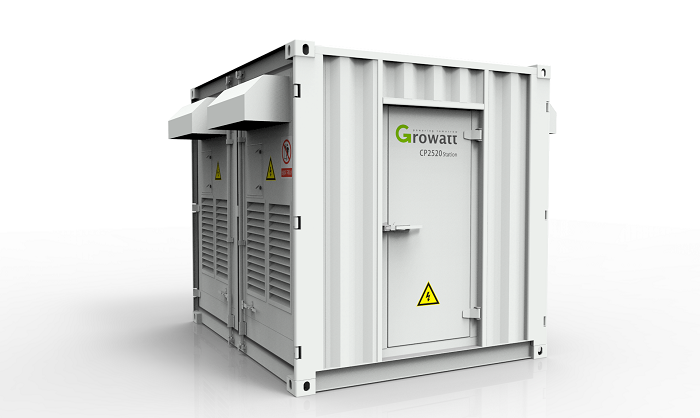pv magazine: What are the key features and benefits of the new Growatt range of inverters, including the 30000TL3-S up to the 50000TL3-S for commercial applications, and the new 8K-11KTL3-S range for residential?
Felix Fang: The most important feature of the Growatt 30-50Kw-s inverters is the wirebox. It is equipped with flexible devices for comprehensive protection of the inverter as well as the PV system. On both the AC and DC side, type II SPDs are configured, for each and every string there is fuse protection and a sensor for monitoring. With the inbuilt Anti-PID kit in our inverter, PV module degradation can be reduced, thus enhancing power yield in the long run. This series of inverters also support AC power supply, which make firmware upgrading at night possible, avoiding any lost generation caused by firmware upgrading during the day.
Our 8k-11KTL3-S models are newly launched inverters for residential and small commercial applications. The fan-less design also makes post-installation maintenance much easier.
Being a string and central inverter supplier, Growatt is well positioned to recognize trends in the sector. Do you notice that there has been a growing trend in China to use string inverters for large-scale solar installations?
Not just in China. Using string inverters in large-scale solar plants is becoming more and more popular worldwide. This is because on the one hand string inverter capacity is increasing as costs decline, and this makes large scale string inverter application feasible budget-wise. Equally, in some scenario like hillside installations, string inverters are often better at handling PV string mismatch caused by shading or non-uniform module orientation. Yet our central inverter solution remains a major proportion in the utility-scale market, because most large-scale plants are standardized ground-mounted, and often central inverters are more cost-effective.
What are the main challenges facing Chinese inverter suppliers in 2017?
More and more Chinese inverter suppliers are penetrating oversea PV markets, and along with market expansion service localization is becoming more critical. Growatt began its overseas operations in 2010, and currently we have more than 10 branch offices in major cities and warehouses around the world to provide fast product delivery and prompt services to our customers, which is vital and a challenge that other Chinese providers will have to face.
Which regions of China and overseas are you seeing the most demand for your central inverters?
In China most large-scale solar plants are located in western regions because of the high availability of land. Overseas we are looking at the booming Indian market; the country’s aggressive 100 GW plan is drawing all major inverter suppliers to this market.
Beyond China, Growatt recently supplied central and string inverters for a project in Thailand – is this country proving a profitable market for Growatt right now?
The Thailand market is very important for us. We have supplied central and string inverters totalling 300 MW to Thailand and currently top inverter as the leading supplier in the country.
Where else in Asia is Growatt growing?
As mentioned, India is definitely a market that no inverter manufacture can afford to overlook. We started our business in India in 2015 and up until now have an installation footprint of just over 100 MW – a figure that is growing fast because while our major application is residential and commercial rooftops, we are also looking to penetrate the utility-scale market soon.
How difficult is it for Growatt to corner shares of the non-Asian markets given the strong global competition? How do you seek to differentiate yourself from competitors?
We provide value-added services along with our inverters. For example, buying our inverter our customers can get access to our free wireless monitoring server, which monitors over 130,000 inverters globally, every 20 minutes. So any failure or problem is picked up rapidly and checked remotely. Based on our experience, up to 60% of inverter problems can be fixed by upgrading firmware, and can be done on our server remotely, thus greatly reducing site visits and saving time for our customer.
The recent launch of Growatt’s off-grid inverters revealed that the product is compatible with lead-acid and lithium-ion batteries: which markets are these inverters intended to serve?
The latest off-grid inverters are designed to provide power supply for rural areas, supporting both lead-acid and li-ion battery chemistries. With optional add-on charger, the charging capacity is scalable, by parallel connection of multiple inverters, the system output capacity can be up to 30KVA
Growatt has also recently introduced a new range of batteries (SP3000-S): for which applications are these best suited?
The SP series charge controllers and li-ion batteries are primarily for developed countries where tariffs are low for increasing self-consumption of solar power. With the charge controller and battery, the redundant energy from solar can be stored without feeding to the grid. Later, when solar is unavailable, the battery can discharge for power supply, thereby improving the PV system’s profitability by reducing consumption from the grid and increasing consumption from solar.
Powered by Growatt.
This content is protected by copyright and may not be reused. If you want to cooperate with us and would like to reuse some of our content, please contact: editors@pv-magazine.com.



1 comment
By submitting this form you agree to pv magazine using your data for the purposes of publishing your comment.
Your personal data will only be disclosed or otherwise transmitted to third parties for the purposes of spam filtering or if this is necessary for technical maintenance of the website. Any other transfer to third parties will not take place unless this is justified on the basis of applicable data protection regulations or if pv magazine is legally obliged to do so.
You may revoke this consent at any time with effect for the future, in which case your personal data will be deleted immediately. Otherwise, your data will be deleted if pv magazine has processed your request or the purpose of data storage is fulfilled.
Further information on data privacy can be found in our Data Protection Policy.